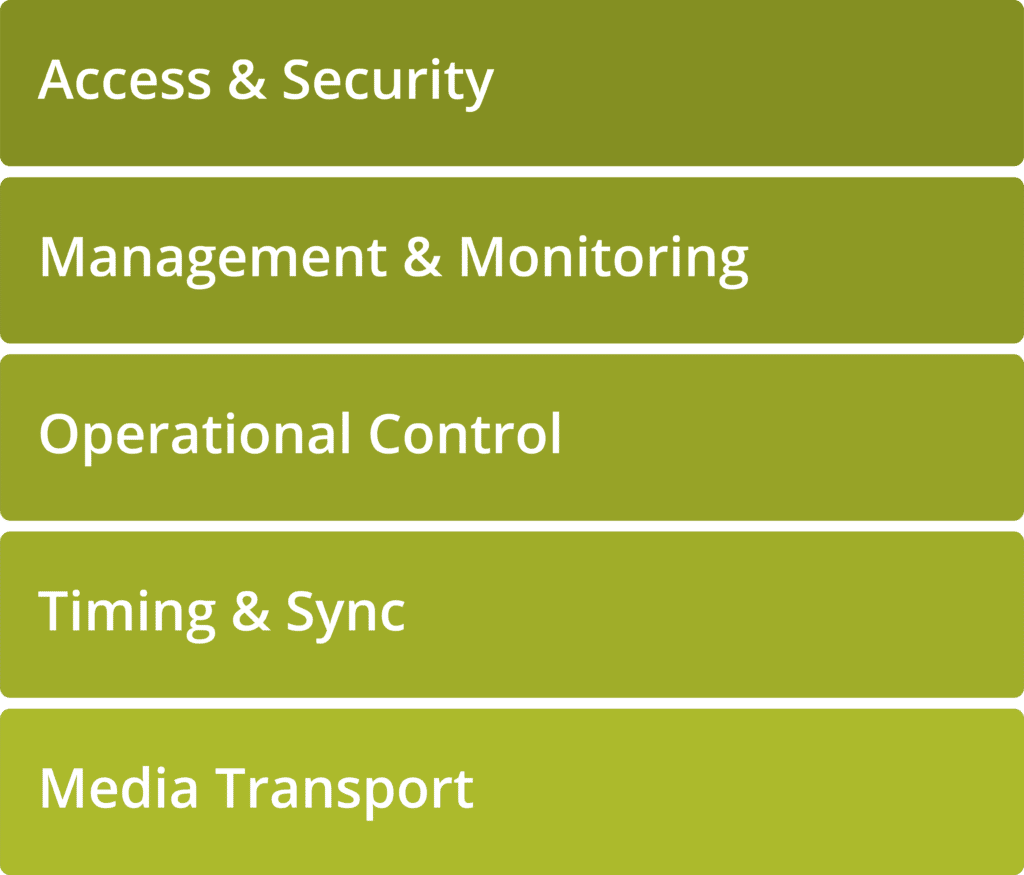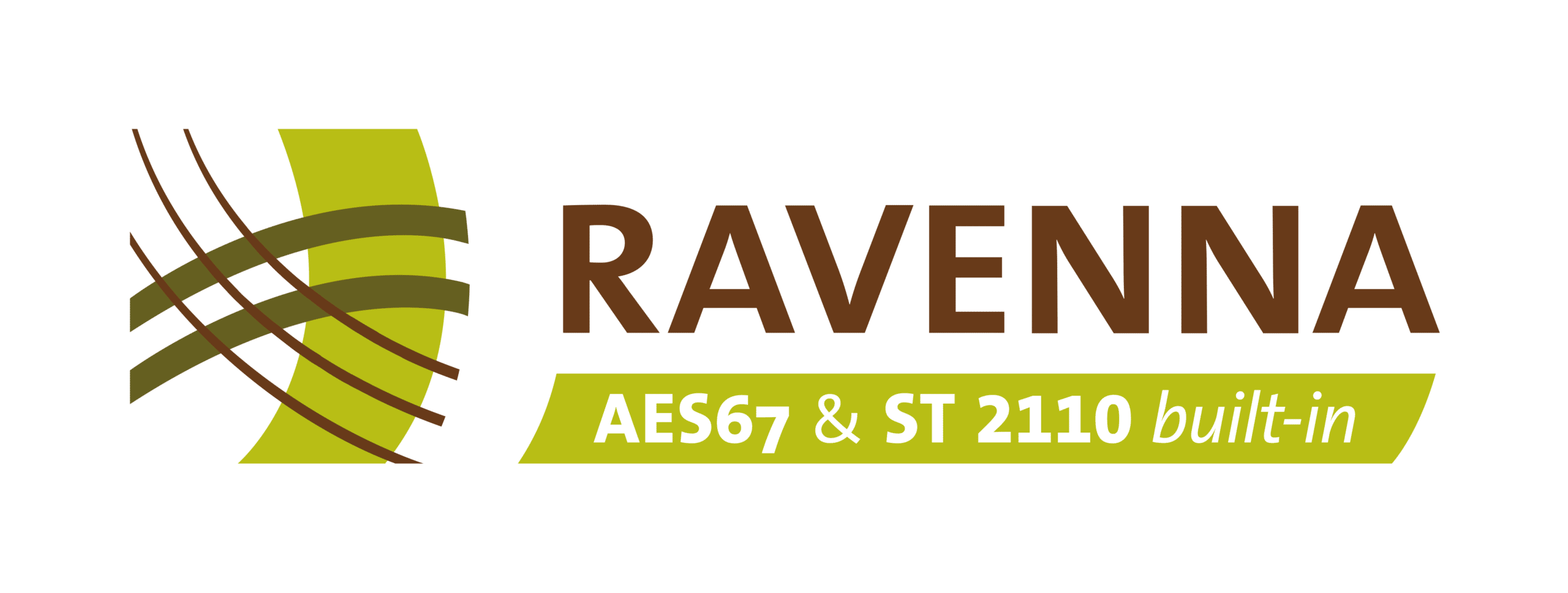Where SMPTE ST 2110 sits
Media Nodes as Essential Building Blocks
While RAVENNA / AES67 and ST 2110 cover synchronisation and transport of audio and video data, a fully working media system typically requires more functionalities.
These building blocks lay out the minimal requirements to build fully functional systems from a user perspective with IP-based devices. Individual functional levels have been visualised to represent how each block is operationally dependant on the block below:

At the bottom layer sits the Media Transport level. For fully synchronized operation, the media transport level needs to work hand-in-hand with the Timing & Synchronization level above – which is also well covered by methods and standards referenced in RAVENNA / AES67 and ST 2110.
The third and fourth building blocks are allotted to system Management & Monitoring and Operational Control, both required for overseeing system health and defining network connections between devices. These blocks are usually addressed by system orchestration and broadcast control & management systems; however, those applications are mostly proprietary or manufacturer-specific. The Advanced Media Workflow Association (AMWA) have been developing, growing and releasing the NMOS family of interface specifications, designed as an open-source alternative. NMOS adoption is slowly increasing as it becomes utilized more regularly in available products.
On the top level sits system security as it predominantly affects all other layers. Whilst requirement documents exist in practice (i.e., EBU R 143 and R 148), virtually no comprehensive concepts or common tools are existent, except for a few individual protocols or general standards which are occasionally incorporated. Consequently, there is a huge demand for action in this area.
SMPTE ST 2110: a Collaboration of the wider Industry
ST 2110 builds on various standards from other organizations, namely IEEE, IETF and AES, whilst incorporating a number of specifications and recommendations from other industry bodies such as VSF and EBU. AMWA develops specifications based on or incorporating ST 2110 to further enhance the functionality towards fully working system requirements. Industry alliances (such as AMWA) accompany the standardization process with industry advice and recommendations.

